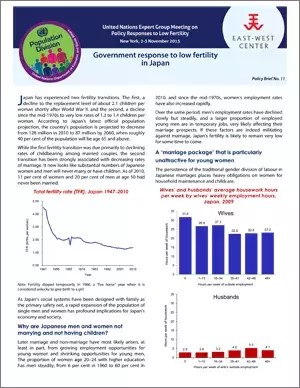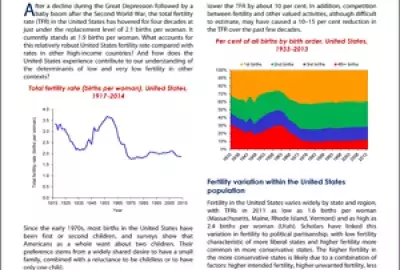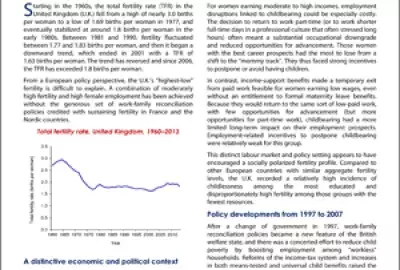Error message

Japan has experienced two fertility transitions. The first, a decline to the replacement level of about 2.1 children per woman shortly after World War II, and the second, a decline since the mid-1970s to very low rates of 1.3 to 1.4 children per woman. According to Japan's latest official population projection, the country's population is projected to decrease from 128 million in 2010 to 87 million by 2060, when roughly 40 per cent of the population will be age 65 and above. While the first fertility transition was due primarily to declining rates of childbearing among married couples, the second transition has been strongly associated with decreasing rates of marriage. It now looks like substantial numbers of Japanese women and men will never marry or have children. As of 2010, 11 per cent of women and 20 per cent of men at age 50 had never been married. As Japan's social systems have been designed with family as the primary safety net, a rapid expansion of the population of single men and women has profound implications for Japan's economy and society.
|
Japan has experienced two fertility transitions. The first, a decline to the replacement level of about 2.1 children per woman shortly after World War II, and the second, a decline since the mid-1970s to very low rates of 1.3 to 1.4 children per woman. According to Japan's latest official population projection, the country's population is projected to decrease from 128 million in 2010 to 87 million by 2060, when roughly 40 per cent of the population will be age 65 and above. While the first fertility transition was due primarily to declining rates of childbearing among married couples, the second transition has been strongly associated with decreasing rates of marriage. It now looks like substantial numbers of Japanese women and men will never marry or have children. As of 2010, 11 per cent of women and 20 per cent of men at age 50 had never been married. As Japan's social systems have been designed with family as the primary safety net, a rapid expansion of the population of single men and women has profound implications for Japan's economy and society.
|
Policy Briefs - United Nations Expert Group Meeting on Policy Responses to Low Fertility







